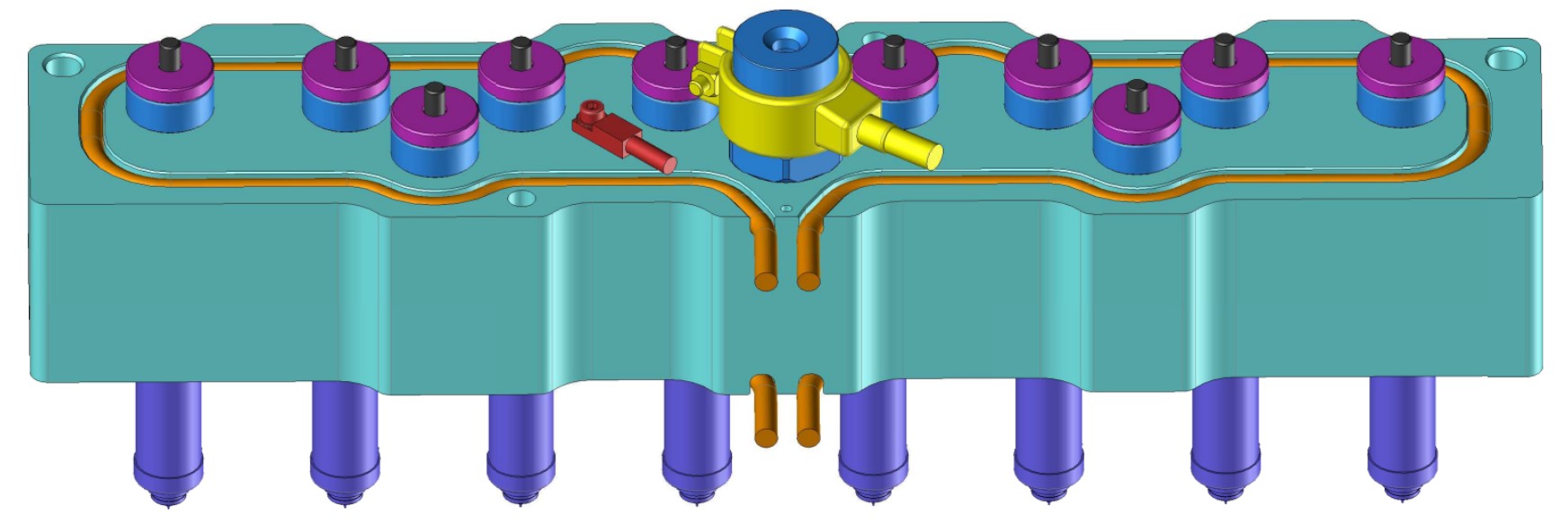Injection mold design
Tooling Design in the NOCENTE engineering office is our core business and the fundamental step in the industrial manufacturing process of plastic parts. This phase, carried out in coordination with the manufacturing workshop, allows us to optimize the design and gain responsiveness between the client, design, and tooling manufacturing by the mold workshop.
This design phase requires advanced technical expertise and the use of advanced CAD software like TOPSOLID as well as rheological studies to ensure the quality and performance of the final mold.
What are the Steps for Tooling Design at NOCENTE?
1. Tooling design is based on the needs and specifications stated by the client for the final plastic part in terms of functional requirements, manufacturing constraints, aesthetic criteria, and industry standards.
2. Injection channels are designed and optimized efficiently, considering the part’s geometry, filling requirements, and manufacturing constraints. Advanced software features allow for creating optimal flow paths to ensure homogeneous distribution of molten plastic in the mold cavity.
3. Integration of standard components such as inserts, ejectors, and cooling systems into the mold/tooling design. This standardizes and parametrizes the design process using predefined elements, minimizing the time needed for modeling.
4. Simulation and analysis allow virtual testing of the mold/tooling behavior and kinematics under production conditions. Engineers can evaluate the mold's performance, detect potential filling or cooling issues, and optimize design parameters before manufacturing.
NOCENTE conducts rheological studies to optimize tooling and plastic part design.
This material flow analysis allows:
1. Plastic Flow Analysis: Rheological studies help analyze the behavior of molten plastic during injection into the mold, including understanding material flow, shear stresses, and cooling phenomena that directly impact the quality and precision of the produced parts.
2. Predicting Filling Defects: Using rheological simulation software, engineers can predict and analyze filling defects such as flow marks, burn marks, or weld lines. This analysis identifies critical mold areas and makes appropriate modifications to improve the injection process.
3. Optimizing Injection Parameters: Rheological studies also help optimize injection parameters like injection pressure, speed, and molten plastic temperature. By adjusting these parameters based on the material’s rheological characteristics, it is possible to improve part quality and optimize mold/tooling performance.

Plastic part design
The design of molded plastic parts by injection is a complex process that requires considering several aspects to ensure the quality, functionality, and manufacturability of the parts.
Learn morePlastic part prototype
At NOCENTE, plastic prototyping is an essential step in developing parts intended for injection molding. It allows creating unique or small series prototypes to validate the concept
Learn more